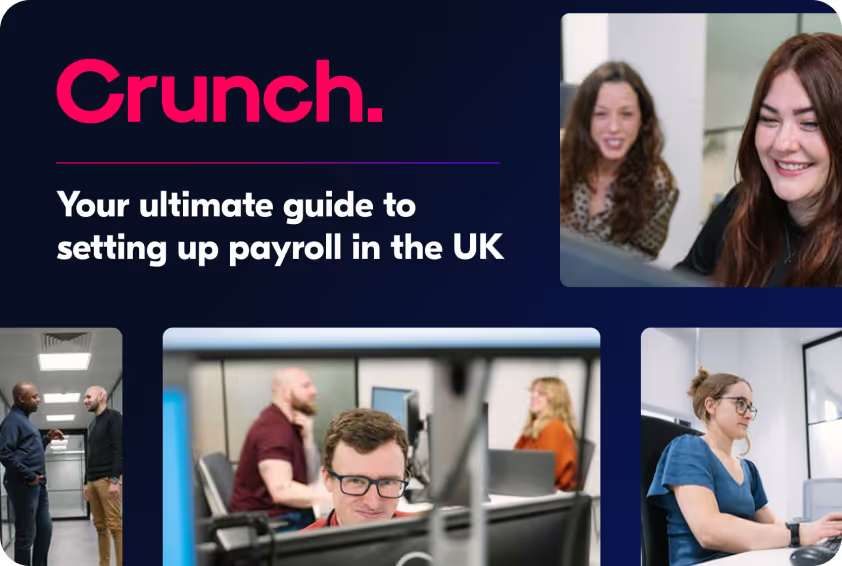As a sole trader, you’re not directly employed and you don’t receive a salary or wage in the traditional sense. So how do you pay yourself as a sole trader and then pay any tax due? You pay yourself based on personal drawings from the business, and you pay Income Tax and National Insurance Contributions based on the profits your business makes.
It's vital to keep a clear record of any personal drawings you take. This is essential for good bookkeeping and for calculating your business profits—the figure your tax bill is based on. You'll also need to put money aside to pay your tax bill when you file your annual Self Assessment.
{{cta-sole-trader-crunchone}}
As a sole trader, how do I pay myself from my business?
You can simply take money from your business account to pay yourself. These payments are known as 'drawings'. We strongly recommend that you use a separate business bank account for your sole trader finances to make this process cleaner.
You need to make sure that you keep a record of these drawings, along with all your other business income and outgoings. We've got an article about the importance of good bookkeeping with some handy hints and tips.
Don't forget, a portion of your earnings isn't truly yours—it belongs to the taxman. You need to put some money aside to pay any tax you owe. This money should be easily accessible, but you could always put it into a savings account to earn some interest until your tax bill is due.
Why you should get a business bank account
Strong organisational skills are vital when you’re setting up your own business, and it’s particularly important to apply this to your business banking.
Of course, if you’re a sole trader, it may appear easier and more convenient to use one bank account for work and personal expenses - but as you get busier, it’ll definitely become more difficult to decipher all of your bank statements when it comes to Self Assessment time. Was that £3.79 in WHSmith a business expense, or your lunch? Or perhaps both?
To avoid confusing matters, and to avoid possible problems with HMRC, it’s absolutely essential to make sure that you keep your personal and business banking separate, and to do that you’ll usually need a dedicated bank account for your business.
Many banks don’t want to let you use a personal account for business purposes - indeed, it may be against the terms and conditions of your personal account. Most business bank accounts come with monthly fees, but also offer introductory offers such as free banking for a set amount of time.
For more advice, check out our article Opening a business bank account – How and why you should do it.
How much should I put aside to pay my tax as a Sole Trader?
As a sole trader, you’re taxed on the profits that your business makes through your annual Self Assessment tax return. Essentially, your profit is the income that your business receives, minus the allowable sole trader business expenses incurred.
These expenses must be purely for business, and must not include any personal expenditure.
Obviously, the higher the amount of profit you report, the more you’ll earn and the greater your tax liability will be. We recommend you set aside the following amounts from your regular drawings to settle your Income Tax and National Insurance liabilities each year (this does not factor payments on accounts due):
Understanding your Income Tax bill for 2025/26
For the 2025/26 tax year (6th April 2025 to 5th April 2026), the amount of Income Tax you pay depends on your profit level. The rates for England and Northern Ireland are:
- Personal Allowance: You can earn up to £12,570 tax-free.
- Basic Rate: You'll pay 20% on profits between £12,571 and £50,270.
- Higher Rate: You'll pay 40% on profits between £50,271 and £125,140.
- Additional Rate: You'll pay 45% on profits over £125,140.
Note that your Personal Allowance is reduced by £1 for every £2 of income you earn above £100,000, meaning it becomes zero if your income is £125,140 or more. For long-term planning, it's useful to know the government has frozen the Personal Allowance and basic-rate limit at these levels until the 2027/28 tax year.
How to report your profit and pay your tax bill
You must report your profits to HMRC each tax year by filing a Self Assessment Tax Return. The deadline to file your return online and pay the tax you owe for the 2024/25 tax year is midnight on 31st January 2026.
HMRC is strict about deadlines. You'll face an immediate £100 penalty if you file late, even if you don't owe any tax. This is followed by daily penalties of £10 after three months, and further penalties of £300 or 5% of the tax due (whichever is higher) at six and twelve months. Paying late also triggers separate penalties and interest charges, which start accruing the day after your payment is due.
If your Self Assessment tax bill is more than £1,000, you'll usually be required to make a Payment on Account. These are two advance payments towards your next tax bill, each being 50% of your previous year's bill. The deadlines are 31st January and 31st July. You won't have to make these payments if over 80% of your tax was collected at source (e.g. through PAYE).
What happens if I also have earnings from employment or dividends?
If you have income from employment as well as your self-employed income, you must declare it on your Self Assessment tax return. Your employer should have already deducted Income Tax and National Insurance through the Pay As You Earn (PAYE) scheme.
You can find this information on your Form P60, which your employer must give you at the end of each tax year. You include this information on your Self Assessment, and HMRC will calculate any additional tax or Self-Employed National Insurance due on your combined income.
Similarly, if you receive dividends or other income (such as from property), you must include these on your Self Assessment. Our article "Freelancing on the side: what tax do I pay?" has further details.
What about National Insurance for 2025/26?
Significant changes to National Insurance for the self-employed are now in effect.
From 6th April 2024, the requirement to pay Class 2 National Insurance Contributions (NICs) was abolished. For the 2025/26 tax year, if your annual profits are over the Small Profits Threshold of £6,845, you are automatically 'treated as having paid' Class 2 NICs. This protects your entitlement to contributory benefits like the State Pension without you having to make any payment. If your profits are below this threshold, you can choose to make voluntary contributions to protect your record.
You will also pay Class 4 National Insurance. For the 2025/26 tax year, you'll pay:
- 6% on profits between £12,570 and £50,270
- 2% on profits over £50,270
Both your Income Tax and Class 4 NICs are calculated and paid through your Self Assessment tax return. You can estimate your liability with our National Insurance calculator.
Just like your Income Tax, Class 4 National Insurance contributions will be worked out on your Self Assessment tax return. Let’s use the same figures from our previous example to demonstrate how this all works:
Remember, you’ll have your Class 1 National Insurance to pay too, through deductions made by your employer for if you also partaken in paid employment, you can find details on the gov.uk website.
What about expenses?
One of the main benefits of being self-employed is that you can offset allowable business expenses against your income. You're only taxed on your profits.To be allowable, an expense must be 'wholly and exclusively' for business purposes. What you can claim is a complex area, so take a look at our detailed sole trader expenses explainer article for more information.
{{st-expense-guide}}
What's on the horizon? Making Tax Digital and future changes
The biggest upcoming change for sole traders is the rollout of Making Tax Digital for Income Tax Self Assessment (MTD for ITSA).
- From 6th April 2026, sole traders and landlords with qualifying income over £50,000 will need to keep digital records and file quarterly updates to HMRC using compatible software.
- From 6th April 2027, this will extend to those with income over £30,000.
The government has also confirmed plans to lower the threshold further to £20,000 from April 2028. Beyond this, the Spring Budget 2025 did not announce any further changes to self-employed tax rates scheduled to take effect after 2026, providing some stability for now.
Isn't all the money in the business mine?
Yes, but it's also your personal responsibility to pay the tax on it. As a sole trader, the law sees no difference between you and your business. You receive the income and you must pay the expenses, including the tax liability. This can be tricky to manage because of the time lag between receiving income from your customers and paying the tax you owe on your profit. This is why careful cash flow management and setting money aside for tax is so important. We've got an article that explains the taxes you may need to pay as a small business.
Even though things are simpler for a sole trader than for a limited company, you might still find it easier to use online accounting software to keep track of all this and prepare and file your Self Assessment. With Crunch, you'll also get unlimited support from a team of client managers and advice from expert accountants. Find out more about our accounting for sole traders packages.
Need help getting started?
We're always looking for ways to support ambitious self-employed and sole trader professionals, and to get you started we've got lots of free resources to explore, including articles and tax calculators. Our team of experts here at Crunch consist of specialist advisors who can guide you through our accounting software to qualified accountants who are available to answer your financial questions through our Ask an Accountant service, file your Self Assessment tax returns, and get your bookkeeping up-to-date.


.svg)

.svg)



.webp)







.avif)
.avif)





